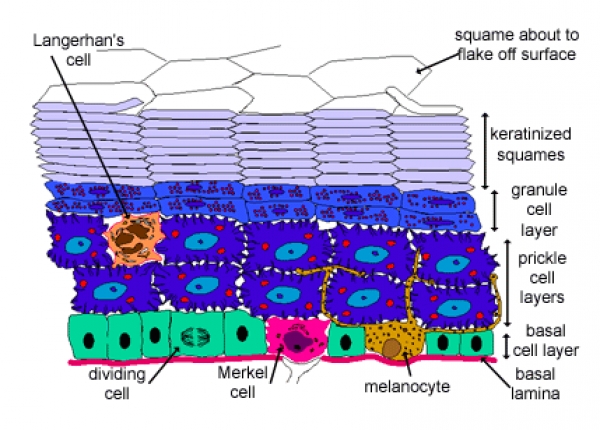Medical grade peel/ resurfacing treatments. Take some good advice from a specialist skin doctor...
21/07/20
Medical Grade Peels
Want to see a 14 minute video of me discussing medical peels? Click here: YouTube channel link
Peels are scary, right? I’ll bet you instantly think of Samantha from Sex and the city? Her face was a red, scaly mess after her peel, but despite this she had the inner confidence to attend her best friend Carey’s opening night. Who doesn’t wish they had Samantha's brass neck??
My guess is Samantha had a moderate strength peel that gave her a few days of peeling skin. There are so many peels out there: some single ingredient types but they are mostly combinations of several symbiotic ingredients nowadays. They are much less expensive than laser treatments and suitable for all skin types - by removing dull surface cells, they can improve sundamage, lines, acne and discolouration.
In the simplest of explanations, there are 3 types of peels:
- Deep peels: These contain phenol but are so uncomfortable that they require sedation, post-procedural sterile wraps and antibiotics. I do not provide this level of peeling in my clinic.
- Moderate peels: These peels are great for dramatic results and show visual improvements such as increased smoothness and a healthy glow. The down side (like in Samantha’s case) is the messy recovery time, which lasts between 5-7 days. The results however are dramatic and long lasting. Some people have 2 a year keep their skin looking tiptop.
- Superficial peels: The benefits are the very minimal recovery time (which may not even last 1 day) and the instant results. You can even have one before a night out and your skin will glow! The downside is you will need a few of these peels to get longer lasting results. However, there are some who love to have one every 1 or 2 months to keep the skin looking tiptop.
Who benefits from a skin peel?
There are whole ranges of peels that can treat such a myriad of skin complaints including:
Dull skin
Lines and wrinkles
Acne prone oily skin
Large pores
Sun damaged skin
Sun and age spots
The majority of these conditions are the result of aging. Our skin ages intrinsically (as you biologically age) and extrinsically (the stresses from the environment). Some extrinsic causes of aging are radiation from the sun, a poor diet, environmental damage and smoking. New skin cells take an average of about 6 weeks to reach the surface. Our skin cells (keratinocytes) are uniform and rectangular in shape in the lowest layers of the skin (well in the epidermis technically) and as they age they move up through the skin and appear like flattened sheets loosely adhered to one another. However, when older skin cells and damaged skin cells reach the top, they appear more like dry leaves and are often pigmented. We perceive this as dry and dull and so we add moisturizer to our skin. This then allows these old skin cells to stick together longer than they should and then they dry out quickly, leading us to believe, ah I must apply more moisturizer. This is not what your skin needs!
Peels actually disrupt the bonds between these damaged skin cells so they flake off and reveal the smooth, light reflecting rectangular skin cells underneath that gives you a radiant glow. The body then sends out signals to the skin to waken up and start producing healthy skin cells again. The underlying collagen and elastin in the dermis, under the epidermis, is also triggered to wake up and produce thicker and stronger base for the new skin cells. You see all these changes as tighter, smoother skin with reduced pores, less acne and reduced unsightly pigmentation. Who doesn’t love a clear and radiant complexion?
What are in these peels?
Well, the specific ingredients obviously vary depending on the peel. In the broadest of terms, there are alpha hydroxy-acids (AHAs) like glycolic (made from sugar cane), lactic (milk) and mandelic (almonds) acids. These disrupt the water-soluble cell bonds that bind skin cells together. There are also beta hydroxyl-acids (BHAs) like salicylic acid (willow bark) that are oil soluble and effectively clear out the oil ducts. There is the commonly used trichloracetic acid (TCA) that traditionally come in a variety of strengths and can go deeper than AHAs and BHAs. Retinoic acid can also be added, the one ingredient with oodles of scientific evidence that it thickens the dermis, increases collagen and exfoliates the outer epidermis. Resorcinol is one of the newest kids on the block that gives longer lasting results as it goes deeper and delivers antioxidant benefits.
Who can’t have peels?
- Ladies who are pregnant or breast-feeding should not get skin peels.
- One has to be cautious with patients who are allergic to aspirin, suffer from collagen diseases, are prone to cold sores, have keloid scarring, or for those whose skin tone naturally falls between olive and dark brown. Peels are possible here but have to be carefully selected.
- Before getting a peel one should avoid hair removal creams and epilation as it burns like crazy. Also please refrain from using your retinol 5 days before a peel, as it will sting and create a deeper peel than what is intended.
What is the process involved when having a skin peel? Does it hurt?
- You need a medical assessment to ascertain the right peels combination for you.
- Makeup is removed
- A skin prepping fluid is applied
- The peel is applied either with a fan brush or cotton buds. Patients often describe pins and needles or a sun burning feeling that this is over quite quickly
- Soothing and protective ointment is applied
- Sunscreen is applied
- Only then can you admire your radiant skin results.
You MUST apply daily sunscreen and if possible keep out of the sun as your skin is very delicate in the first 2-4 weeks. This is because, as described, the outer corneocytes have been removed, so the epidermis is thinner and more prone to sun damage. If you can make SPF part of your daily skin care regime for the rest of your life that's even better! But make sure you get your arms and legs exposed to UVB to help with Vitamin D production. This vitamin helps keep your bones strong among other health benefits.
Want a no-nonsense low down on chemical peels? You can trust this NHS resource to tell you the facts:
https://www.nhs.uk/conditions/cosmetic-procedures/chemical-peels/







